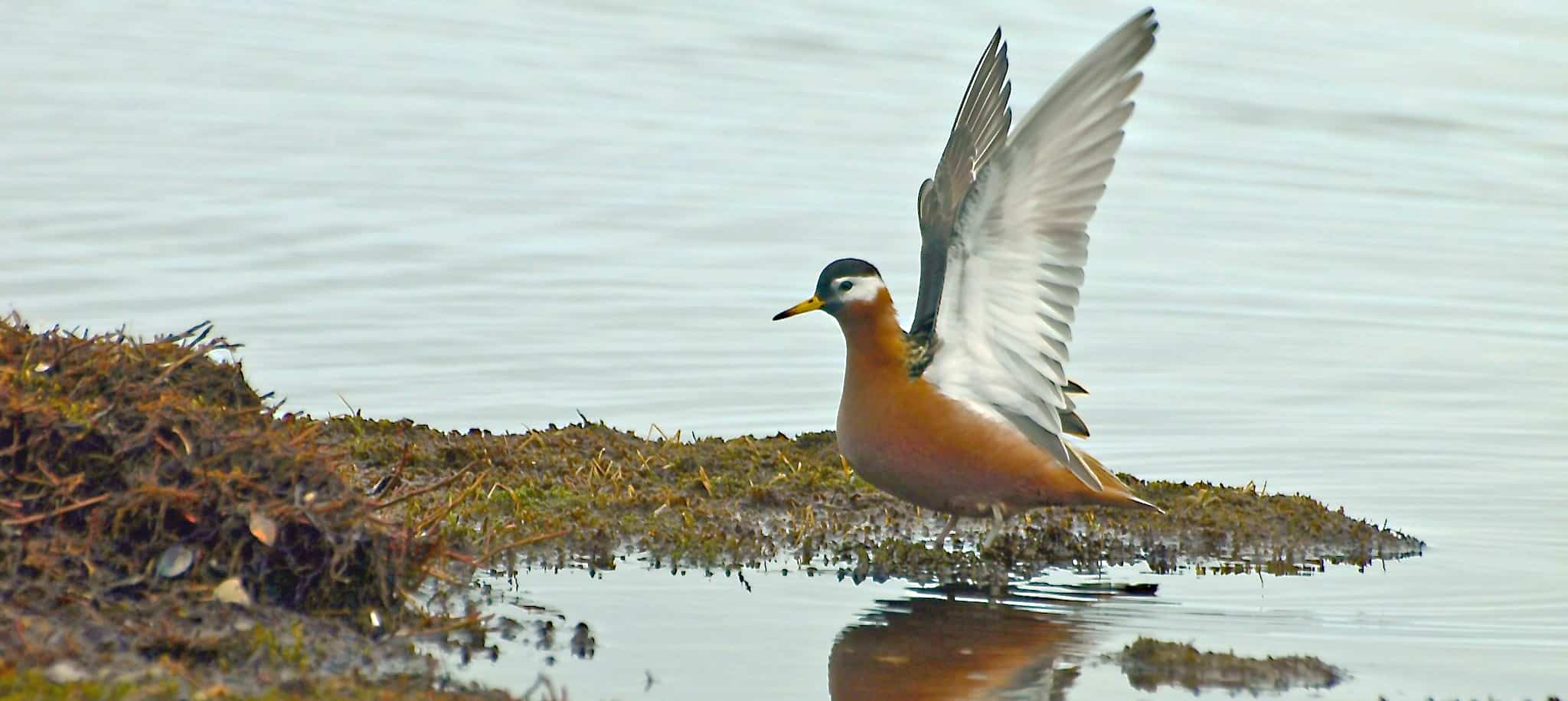Share this article
Overabundant snow geese graze through shorebird habitat
Since the 1970s, the midcontinental population of Arctic snow geese (Chen caerulescen) has been increasing, now exceeding 15 million individuals.
At the same time Arctic shorebird numbers are declining. Researchers wondered if there was a link between the two.
“In a number of areas, there has been documentation of pretty serious habitat alteration by these snow geese,” said Scott Flemming, a PhD candidate at Trent University and lead author of a recent study published in the Journal of Applied Ecology. “The thought was, maybe this habitat alteration by geese is influencing the availability of habitat for shorebirds’ nesting.”
When the snow geese migrate to the southern United States during the winter, Flemming said, agricultural fields provide them with corn and soy to feed on. When they return to the Arctic, they’re in great shape as far as their body condition and survival goes. As a result, there’s more geese and more grazing.
In the study, he and his colleagues studied cover nesting shorebirds such as white-rumped sandpipers (Calidris fuscicollis), semipalmated sandpipers (Calidris pusilla), red phalaropes (Phalaropus fulicarius) and dunlins (Calidris alpina) — shorebirds that prefer greater nest concealment from predators. He and his colleagues suspected these species would be most affected by snow geese since they prefer more vegetation. The researchers also looked at open-nesting shorebirds such as the American golden-plover (Pluvialis dominica), semipalmated plover (Charadrius semipalmatus), ruddy turnstone (Arenaria interpres) and the black-bellied plover (Pluvialis squatarola).
The researchers documented areas in Nunavut where snow geese had a large effect on the habitat, a moderate effect, and areas where they typically don’t breed at all. Then, they conducted habitat surveys to document shorebird nesting habitat, including cover and vegetation type, specifically focusing on moss carpet and sedge meadow.
“In other areas, there had been studies that had shown that as geese intensively graze down sedge meadow habitat, it could be converted into moss carpet habitat,” he said. “Moss takes over, and it is harder for sedges and grasses to grow back through the moss.” They also measured height of the different cover types that would contribute to concealment.
Flemming and his team also compared these characteristics to shorebird nest sites about 11 years ago to determine if habitat changed over time.
They found that the availability of sedge meadow and nest concealment was greater farther away from goose colonies. Moss carpet also decreased with distance from the colony.
The team also found that the density of cover nesting shorebirds increased with distance from snow goose colonies as a whole. “It was fairly dramatic,” Flemming said. However, at the moderate goose site, some shorebirds were choosing the same areas they had chosen 11 years before even though geese had altered the area. These nests also had less concealment and less sedge meadow than at the non goose-altered site, making them more vulnerable to predators.
While habitat loss causes problems in wintering areas for Arctic shorebirds, Flemming said, it’s important to also consider changes in their breeding habitat and take that into account when setting snow goose population targets.
Header Image: Red phalaropes like this one are cover nesting shorebirds. Researchers found large snow goose colonies may impact their nest sites and habitat. ©Scott Flemming








